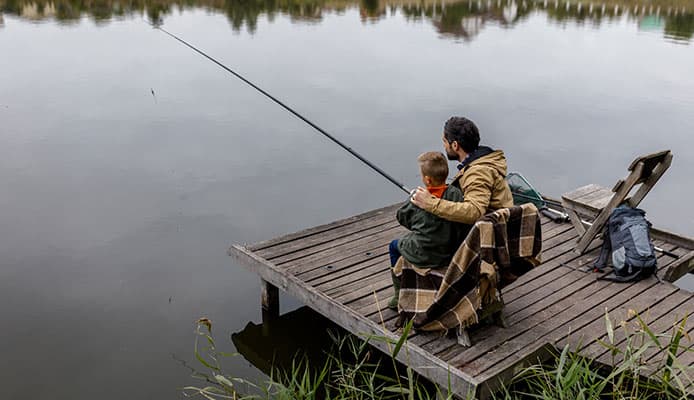
-
1.
-
2.
-
3.
-
4.
-
5.
The best bass fishing rods that will increase your catching odds and make you a more successful bass angler.
Bass fishing is such an exciting sport. This species is aggressive and doesn’t just give in and let you haul it without putting up a good fight. Its a struggle to reel them in and success doing so presents such a thrill. It’s easy to get hooked and it’s no wonder this is one of the most popular types of fishing.
One thing that is essential for success in catching bass is a good bass rod. The right pole is like an extension of your hands. It should work well with your lure, be sensitive enough to give you a good feel for your catch, strong and flexible enough to be able to haul your catch without snapping like a stick and comfortable to handle.
If you’re an avid bass angler or looking to explore this popular fishing pastime and need a nice set of fishing rod for bass, this page will help you find what you’re looking for. To begin with, below are the top 10 best bass fishing rods reviewed.
OUR TOP PICK
Shakespeare UglyStik GX2
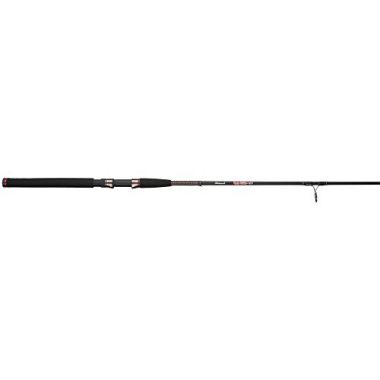
- Stand Out Features - Why We Love It
- Lightweight and comfortable to use
- Tough and durable construction
- Great pole for a great price
EDITORS CHOICE
KastKing Perigee II
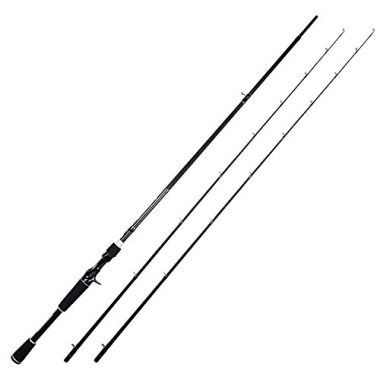
- Stand Out Features - Why We Love It
- Each comes with two rod tips so it's like buying one and getting one free
- The line offers plenty of options making it easy to use your desired length, power and action
- These are versatile rods you can use for all kinds of species and fishing techniques
- They come very well packaged to prevent damage while in transit
- These rods are backed by a lifetime warranty
BEST VALUE
Entsport Camo Legend Baitcasting
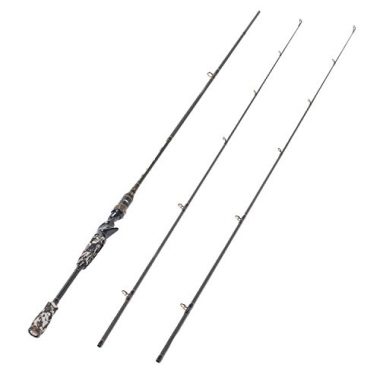
- Stand Out Features - Why We Love It
- Comes with 2 different rod power tips - medium and medium Heavy
- Strong and durable construction
- 2-piece design for portability convenience
- Comes with a protective rod bag
- Very stylish and elegant design
- Unique notched reel lock design
Berkley Cherrywood HD Casting
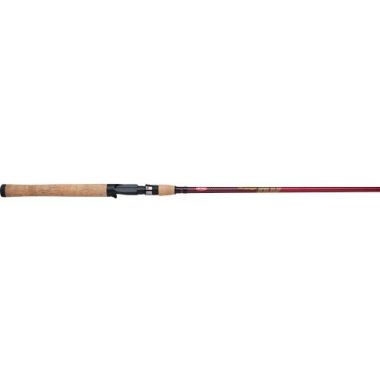
- Stand Out Features - Why We Love It
- Inexpensive yet good quality and performance
- Attractive and stylish red rod
- Very light and comfortable to use
Pflueger Trion
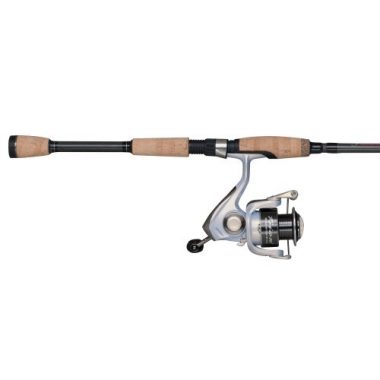
- Stand Out Features - Why We Love It
- Strong and corrosion resistant construction
- Great combo with a great price
- Lightweight and balanced
- Easy and comfortable to use
Abu Garcia Vengeance Casting
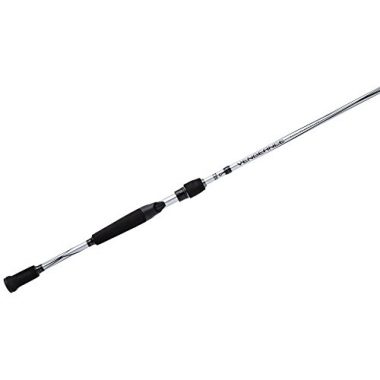
- Stand Out Features - Why We Love It
- Strong and durable construction
- Very light and comfortable to use
- Attractively designed
- Great price and value
Entsport Sirius 2-Piece 7-Feet Casting
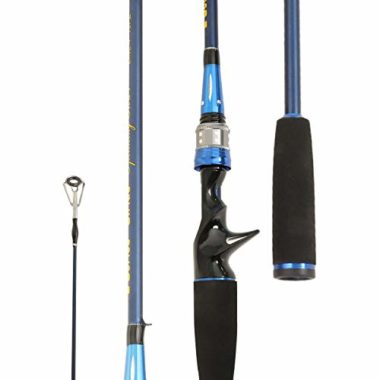
- Stand Out Features - Why We Love It
- Lightweight and high strength
- The packable 2-piece design makes portability easy
- Stylish and good looking bass fishing rod
- It comes with a protective bag
- Backed by excellent customer service in case of a problem
Shimano Stimula 2-Piece Spin
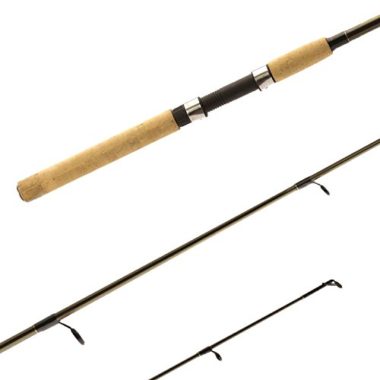
- Stand Out Features - Why We Love It
- This rod offers great value
- It is very attractively designed
- Lightweight and comfortable to use
- Two-piece design transports easily
Falcon Rods Coastal Spinning

- Stand Out Features - Why We Love It
- Pole quality is excellent
- Well balanced and versatile
Tica SMHA Series Trout and Walleye
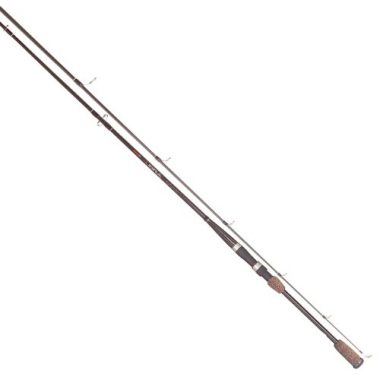
- Stand Out Features - Why We Love It
- Offer a lot of versatility
- Great rods with excellent construction
- Premium fit and finish with affordable pricing
- Nice action and comfort during use
How To Choose The Best Bass Fishing Rod – Buying Guide
The above are the best bass rods but there is no ‘one best rod suits all’ when it comes to bass fishing rods. That’s why you’ll find each model offering so many options.
Should you go for the medium or heavy? Light or fast action? Is a one piece better than a two piece? Casting vs. spinning? 6, 7 or 8 feet?
It can get overwhelming to shop for and hard to pick the right rod for bass if you don’t understand what the technical terms used to describe rod characteristics mean and if you’re just getting started in the world of bass fishing. Luckily, we got you.
To make it easy to choose the best bass rod for the size of bass you go you, your casting style, casting distance, experience level and more, we’ve explained the factors that affect how a rod works and the terms used to describe them.
Rod Handle Type
You’ll be holding the rod in your hands and it’s important that you have a strong and comfortable grip so you can haul in the fish no matter how heavy your catch is and no matter how cold the weather is or how long you’re out there pursuing bass.
This is why the handle type on a bass rod is an important factor to pay attention to. The three main rod handle types are cork handles, EVA form handles and wood handles.
Cork handles offer plenty of grip and are more sensitive so it’s easier to detect any bite. They’re lighter than wooden handles
EVA foam handles are very comfortable to grip and very durable as long as they’re attached to the blank well.
Wood handles look great but their grip is not very good especially where they’re cold. They feel cold when the conditions are cold and also get damaged easily. However, well made and seasoned wood handles can last longer than cork handles.
Action
The action of a rod refers to how stiff or flexible it is when it comes to bending. It describes how far down (from the tip) the rod starts bending when under pressure. The action of a rod can be seen in the shape it acquires when a weight is hanging from it.
There are extra fast, fast, moderate or slow action rods. In some cases, action is described as medium or heavy, which can be confusing because these are the same terms used to describe rod power.
Extra-fast action rods are least flexible and flex aggressively at the upper tip only with very little bend through the rod length. They are also quite sensitive to any kind of vibrations. They are best suited for bigger fish and heavy covers such as slop, docks or wood when you want to lure the bass away from cover. The faster action at the tip puts more pressure on the bass.
Fast action rods are more flexible than extra-fast rods and tend to bend towards the middle of the rod. Their bend action is in the upper 25 to 30 percent. They provide both power and flex and are the favorite for freshwater anglers. They are very good a casting topwater baits, soft sticks, jerk baits and spinnerbaits.
Moderate action rods bend all the way to the middle making them the best to use with light fishing line and finesse tactics. Casting lures is usually easier with these.
Slow action rods have the greatest flexibility and bend more slightly through the entire length of the rod. They’re best suited to small bass, smaller lures, and lighter baits.
Power
Also referred to as backbone, the power of a rod refers to its overall strength and the power required to bend or load the rod. Simply, it’s how easily a rod bends. Rod power is described as heavy, medium-heavy, medium, light, or ultra-light.
Heavy power rods are less flexible to bend than medium or light power rods. Heavy power rods are ideal when going after heavy and large fish while light power rods bend easily and are suited to small bait fish.
Rod power also determines the fishing line and lure weights you can use with a rod. The heavier the rod power, the heavier the fishing line and lure you can use. The lighter the rod power, the smaller the fishing line and lures they can handle well.
Material
Fishing rods should be sensitive so they transmit vibrations effectively and sturdy, durable and yet flexible so you can reel in your catch without it breaking. Bass fishing rods are made from graphite, fiberglass or a combination of these two materials.
Graphite or carbon fiber rods are lightweight and more comfortable to use. They also have excellent sensitivity. If a fish bites you’re better able to feel it. This makes them great at handling finicky fish. Most anglers turn to these rods when fishing in bad weather and there is a need for better feel.
The downside to this high sensitivity is that an angler may perform a hookset too soon making it possible for the fish to escape before it bites the bait properly. They are usually costly but are the most popularly used.
Fiberglass rods are more affordable, slightly heavier than graphite rods but they’re becoming lighter. They are strong and durable but aren’t as sensitive as graphite rods. An experienced angler can still be able to detect a bite. They tend to flex from the tip to the butt of the rod when lifting fish up. They’re better suited to larger and heavier fish and experienced angler tend to favor fiberglass rods.
Composite rods are made from a combination of graphite and fiberglass. As such, they offer the sensitivity and low weight of a graphite rod and the strength and durability of a fiberglass rod. They’re the go-to for cranking because they exhibit the necessary give when a fish strikes but aren’t so stiff that you pull the hooks out too soon letting the fish escape.
Casting Rod vs. Spinning Rod
Baitcasting and spinning rods are the two types of rods for bass fishing. So should you opt fo a baitcasting rod or a spinning rod?
Casting Rods
Baitcast rods have the reel and guides/eyes located on the top side of the rod. The guides are bigger at the reel end and gradually reduce in size as you move away from the reel.
This design gives the angler more pulling power because the weight pulls more against the rod than the guides. Casting rods are able to handle heavier lines and lures and are better equipped to handle larger and more aggressive bass.
Most anglers prefer a baitcasting rod and most situations call for it as they require the use of heavier line and stout equipment to work lures efficiently and haul fish.
And if you want to toss spinnerbaits, buzz baits, cranks, jerk baits, toads, topwater slop and do deep cranking, pitching and flipping, a casting rod is what you need.
Beginners often find casting reels intimidating but once learned, they are easy and comfortable to use.
Spinning Rods
Spinning rods have the reel and guides located on the underside of the rod. The line comes off the reel from different directions and guides are larger than those on a baitcasting rod where the line comes off the reel straight off.
Spinning rods work better with lighter lines and lures and are best suited for smaller bass. They’re also great for fishing in spots that are difficult to reach with casting rods. Most beginners find spinning rods and reels easier to use and master.
Some specific actions such as skipping tubes under docks, working a shaky head, drop shot rig, wacky rig, micro cranks and topwater and some other specialized finesse techniques require the use of a spinning rod.
You might also like: Perfect Baitcaster Combo
Length
Length refers to how long the rod is. The typical bass rod length is 6 – 8 feet. Short rods are usually between 6 and 7 feet long. Long rods about 7 to 9 feet long.
The longer the rod, the larger the distance you can cast. Shorter rods give you more accuracy and control but you can’t cast from a large distance.
When choosing the rod length to get, consider the casting distance, where you’ll be casting from and type of bait. Make fishing easier with fishing fliers.
Casting for a short or medium distance calls for a short rod. Longer rods of 7.5 to 12 ft are required for long distances such as if you fish off a wide open area and are tall as well.
If you are casting off from a dock, kayak or a higher vantage point, then a small rod is preferable. Without this height advantage, a longer rod is necessary. To check our best kayak trailers for transporting your kayaks such as fishing kayaks, ocean fishing kayak, and river fly fishing kayak.
A short rod is ideal to use with small to medium lures to go after small to medium bass. Since you are going to require heavier lures and lines for bigger bass, you will need a longer rod.
Guides
A good quality guide is an important component of a bass rod as it enables you to cast longer and also reduces line friction.
Ceramic or titanium guides are top quality and offer the best performance. The guides should be placed properly ensuring each feature is properly rounded to spread out the stress applied to the blank when fighting a bass.
FAQs
Q: What Are The Rods Made From?
Rods are made from graphite, fiberglass or a combination of the two materials in the case of composite rods. Graphite rods are extremely lightweight, have excellent sensitivity, are comfortable to use for prolonged casting.
Fishing rods should be sensitive so they transmit vibrations effectively and sturdy, durable and yet flexible so you can reel in your catch without it breaking. Bass fishing rods are made from graphite, fiberglass or a combination of these two materials.
Fiberglass rods slightly heavier than graphite rods but they’re becoming lighter. They are strong and durable but aren’t as sensitive as graphite rods. An experienced angler can still be able to detect a bite. They’re better suited to larger fish and experienced anglers.
Composite rods are made from a combination of graphite and fiberglass. As such, they combine the sensitivity and low weight of a graphite and the strength and durability of fiberglass. They’re great for cranking.
Q: One Piece or Two Piece (or more) Rod?
This depends on how portable you want your rod to be. Rods are very long and it can be hard to carry them.
Two pieces or more rods are easier to transport as they’re designed to break down into pieces. You can dismantle them into pieces making them compact enough to transport easily and fit in smaller spaces for storage.
There are also telescoping rods that telescope and get very small for convenient during travel without having to handle multiple pieces.
If you have a way to transport a complete rod easily, then it’s better to go for a 1 piece rod as it has more sensitivity and gives you more control.
Q: What About Rod Power And Action?
Power and action are terms used to describe the characteristics of a bass fishing rod.
Power
Rod power or backbone describes the overall strength of a rod and the power it takes to bend the rod. In simple terms, it’s how easily a rod bends. Power is described as heavy, medium-heavy, medium, light, or ultra-light.
Heavy power rods are less flexible to bend and are ideal when going after heavy and large fish while light power rods bend easily and are suited to small bait fish.
The heavier the rod power, the heavier the fishing line and lure you can use. Lighter rod power goes with lighter fishing line and lures.
Action
The action of a rod refers to its stiffness or flexibility. It describes how far down (from the tip) the rod starts bending when under pressure. Action can be seen in the shape it acquires when a weight is hanging from it.
There are extra fast, fast, moderate or slow action rods. Extra-fast action rods are least flexible and best suited for bigger fish and heavy cover luring.
Fast action rods are more flexible and possess both power and flex. They are the favorite for freshwater anglers.
Moderate action rods bend all the way to the middle making them the best for light fishing line and finesse tactics.
Slow action rods have the greatest flexibility are best suited to small bass, smaller lures, and lighter baits.
Q: What is the Purpose of a Good Bass Fishing Rod?
Having a good bass fishing rod that suits you makes you more successful at catching bass. A good bass rod for you works well with the specific lures you’re using allowing you to get the lure out as far as you need it to go without spooking the fish.
It has good sensitivity and alerts you to even the tiniest nibble at the end of your line so you can be ready to for action. And it enables you to fight the bass and haul it without hurting your hands or the line breaking.
This way, a good bass fishing rod makes you better at catching this aggressive species and enables you to enjoy the experience more.
Globo Surf Overview
Your success as a bass angler highly depends on the rod you’re using. A good bass fishing rod increases your chances of a successful catch. It can be hard to detect, catch and haul successfully if you don’t have a good bass fishing rod. As much as you’d like to grab a rod as fast as possible and go try it out in the water, it’s very important to take your time to ensure you select the best rod.
Now that you know how to choose the right bass fishing rod, you can make an informed decision. It’s also important to ensure that you have the right rod and reel combo and that the rod suits your fishing style and the weight of the fish you’ll be going after.
The above are the best bass fishing rods that are top rated by fellow bass anglers. They all offer distance, accuracy, strength, comfort, durability, sensitivity, and all of the features essential in a good bass fishing rod. They’re are made by great brands and have proven to be excellent at catching and reeling bass. If you like our fishing rods articles, you might want to check our fishing waders, kayak accessories, fishing float tubes and a lot more.
Go over the above bass rod reviews and see if you can find the right one for you. When you find the perfect rod, it’ll be a pleasure to fish with it and you’ll have successful and enjoyable bass fishing excursions.
More Fishing Rods Reviews:
- Baitcaster Combo
- Trolling Rods
- Pen Fishing Rods
- Spinnerbait Rods
- Frog Rods
- Crappie Rod And Reel Combos
- Surf Fishing Rod And Reel Combos
- Bass Rod And Reel Combos
- Flipping And Pitching Rods
- Ultralight Spinning Rods
- Tenkara Rods
- Tuna Rods
- Salmon Fishing Rods
- Bamboo Fly Rods
- Travel Fishing Rods
Do you love bass fishing? What is your favorite rod and most memorable catch? Share in the comment box below.




